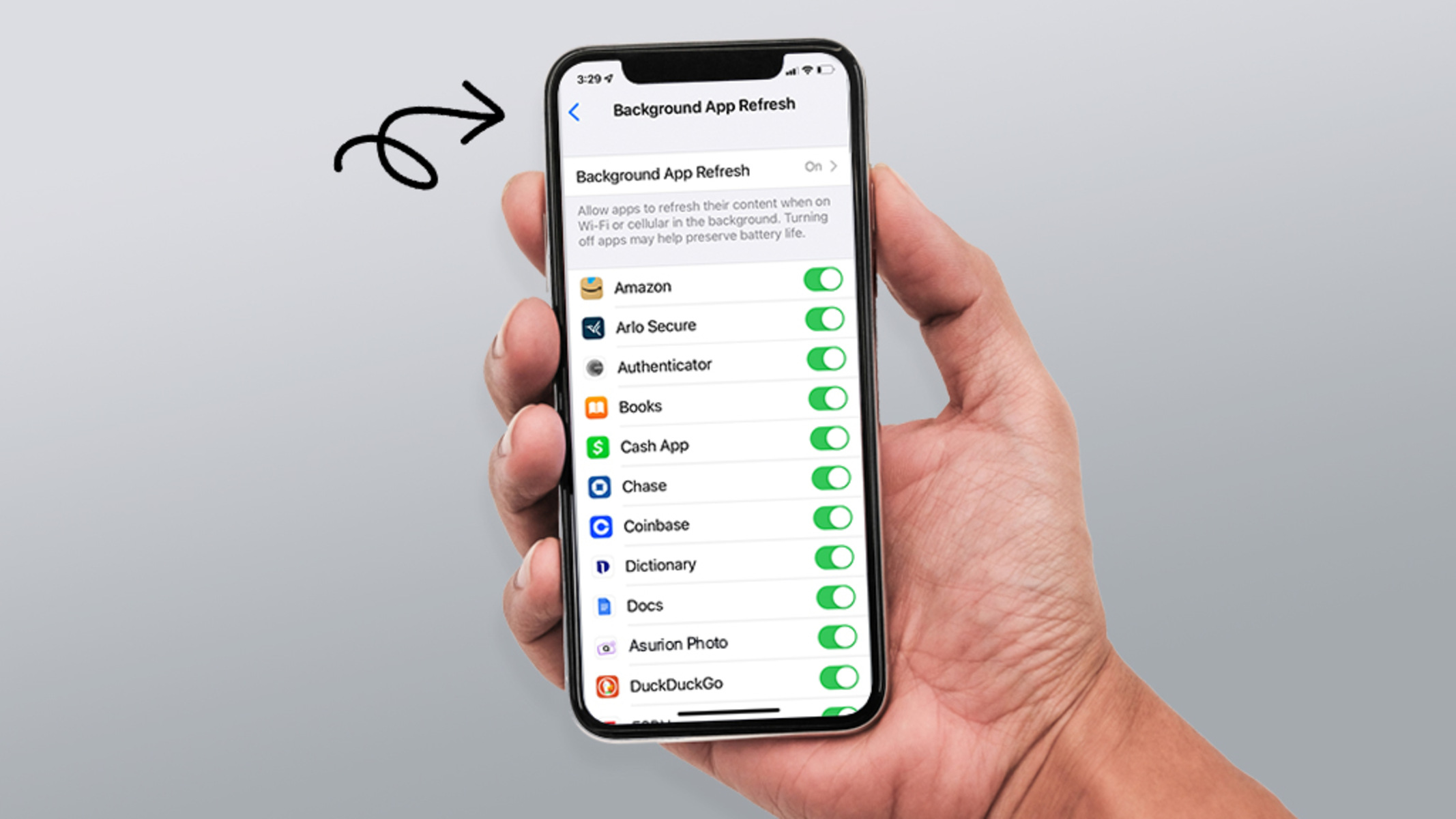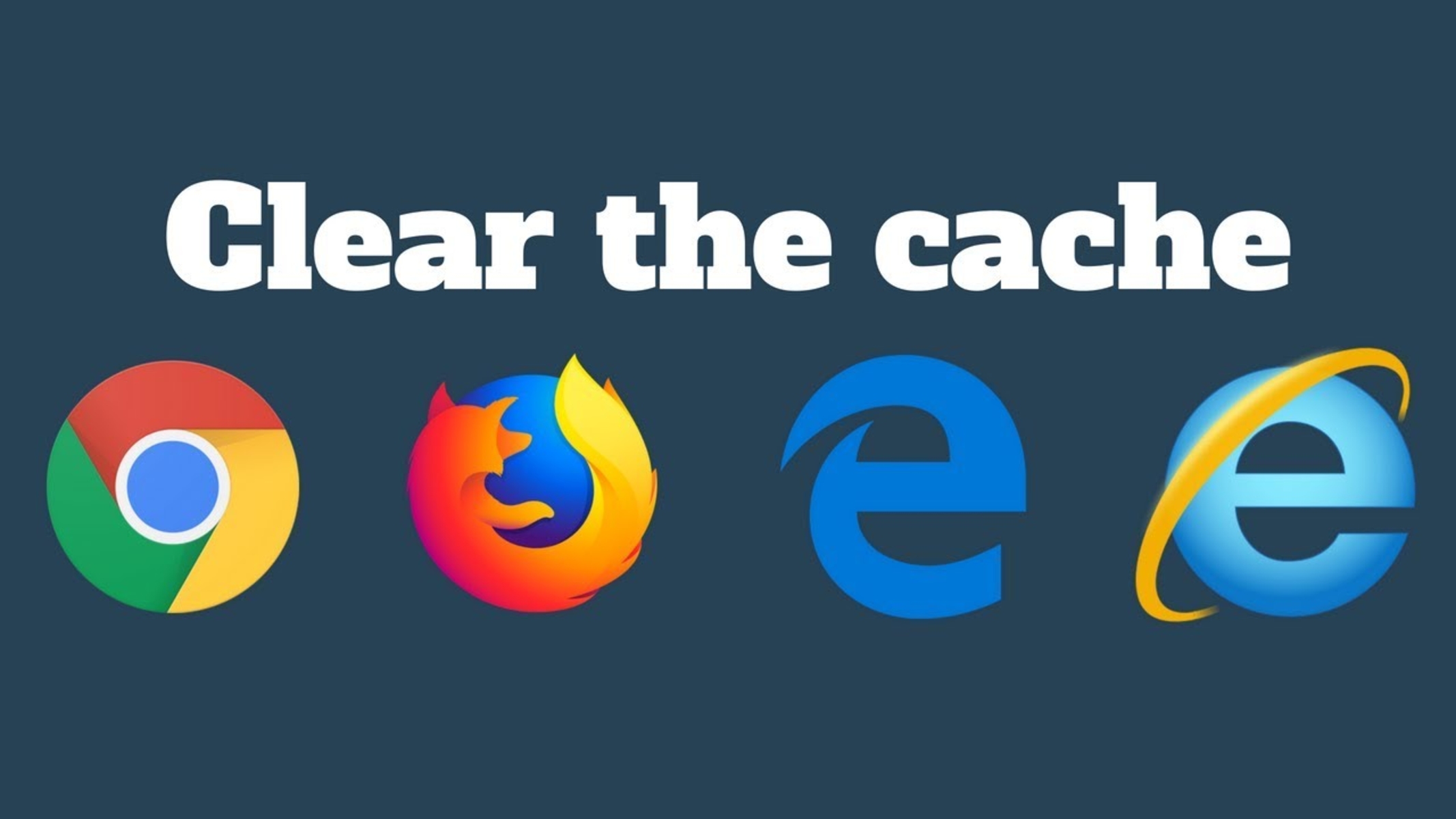Why Refreshing Your Browser is Important
Refreshing your browser is a simple yet powerful action that can have a significant impact on your browsing experience. It helps clear out temporary files, cache, and cookies, improving the performance and stability of your browser. Here are a few key reasons why refreshing your browser is important:
- Clears Cached Data: When you visit a website, your browser stores a cache of images, scripts, and other files to make subsequent visits faster. However, over time, this cached data can become outdated or corrupted, leading to display issues or slower loading times. Refreshing your browser clears out this cache and forces it to re-download the most current version of the files.
- Resets Session Data: Many websites use session cookies to remember your preferences and login information. Sometimes, these cookies can get corrupted, causing authentication or functionality problems. Refreshing your browser resets these session cookies, allowing you to start fresh and resolve any issues related to your website sessions.
- Fixes Website Glitches: Websites occasionally encounter glitches or temporary issues that may affect their functionality. This could manifest as broken links, missing images, or unresponsive forms. By refreshing your browser, you give the website a chance to reload and re-render, often resolving these glitches in the process.
- Updates Website Content: If you frequently visit websites that frequently update their content, refreshing your browser ensures that you are viewing the most recent version of the page. Without refreshing, you may unknowingly be viewing stale information, missing out on important updates or changes.
- Improves Browser Performance: Over time, your browser may accumulate unnecessary scripts, extensions, and processes that can slow it down. Refreshing your browser allows it to close all active tabs and processes, giving it a clean slate and improving its overall performance.
By regularly refreshing your browser, you can ensure a smooth and optimal browsing experience. It helps you stay up to date with the latest website content, resolves common website issues, and keeps your browser running efficiently. So, the next time you encounter any browser-related problems, try refreshing it before diving into complex troubleshooting steps.
What Happens When You Refresh Your Browser
Have you ever wondered what actually happens when you hit that “refresh” button in your browser? When you refresh your browser, several important actions take place behind the scenes to ensure a fresh and updated browsing experience. Here’s a breakdown of what happens when you refresh your browser:
- Requesting the Latest Version: When you hit refresh, your browser sends a request to the server hosting the website you’re visiting, asking for the latest version of the webpage. This request is known as an HTTP GET request.
- Downloading Page Resources: Once the server receives the request, it begins to send the necessary files and resources needed to display the webpage correctly. These resources include HTML, CSS, JavaScript, images, and any other files that make up the webpage.
- Rebuilding the Page: As the browser receives the updated files, it starts to rebuild the webpage based on the new content. It parses the HTML and CSS code, interprets the JavaScript, and renders everything on your screen accordingly.
- Clearing Cache and Cookies: During the refresh process, the browser also clears its cache and cookies related to the website you’re refreshing. This ensures that you’re not loading any outdated or cached versions of the webpage.
- Resetting Session Data: In addition to clearing cache and cookies, refreshing your browser also resets any session data associated with the website. This means that any temporary preferences or login information will be cleared, allowing you to start fresh.
- Updating Dynamic Content: If the webpage you’re refreshing contains dynamic content, such as live data feeds or user-generated content, the browser will request updated information from the server and display the latest data on the refreshed page.
- Reloading Extensions and Scripts: Some browser extensions or scripts may need to be reloaded after a refresh to ensure they are functioning correctly and the latest version is in use.
Overall, refreshing your browser triggers a series of actions that update the webpage content, clear cache and cookies, and ensure you are viewing the most up-to-date version of the web page. It is an effective way to resolve display issues, load the latest content, and start fresh with a clean browser state.
Different Ways to Refresh Your Browser
Refreshing your browser is a simple task, and there are multiple ways to accomplish it, depending on your browser and device. Here are some of the common methods you can use to refresh your browser:
- Using the Refresh Button: The most straightforward way to refresh your browser is by clicking the refresh button. It usually appears as a circular arrow icon in your browser’s toolbar. You can find it near the address bar or at the top of your browser window.
- Keyboard Shortcuts: Most browsers offer keyboard shortcuts to refresh the current webpage. The standard shortcut across different browsers and operating systems is usually Ctrl+R (or Cmd+R on macOS).
- Right-Click Menu: Another way to access the refresh option is by right-clicking anywhere on the webpage. This will open a context menu, where you can select the “Refresh” or “Reload” option to refresh the page.
- Browser Menu: You can also find the refresh option in your browser’s menu. Look for options like “View,” “Reload,” or “Refresh” in the top menu bar or the drop-down menu accessible via the three-dot or hamburger icon.
- Gesture Controls: If you are using a touch-enabled device, you can often refresh your browser by performing a swipe-down or pull-down gesture on the screen. This varies depending on the specific device and browser you are using.
- Auto-Refresh Extensions: Some browser extensions allow you to set up auto-refresh intervals for specific websites. These extensions automatically refresh the webpage at defined intervals, ensuring you always have the latest content without manual intervention.
No matter which method you choose, refreshing your browser clears cache, resets session data, and requests the latest version of the webpage. It is a helpful way to remedy display issues, load the most recent content, and ensure a smooth browsing experience.
Benefits of Refreshing Your Browser Regularly
Refreshing your browser on a regular basis offers several benefits that can enhance your browsing experience. Here are some of the key advantages of refreshing your browser regularly:
- Improved Performance: By refreshing your browser, you clear out temporary files, cache, and cookies, which can help improve the overall performance and speed of your browser. This can lead to faster page load times and smoother browsing.
- Updated Content: Websites often update their content frequently. By refreshing your browser, you ensure that you are viewing the latest version of a webpage, staying up to date with news, updates, or changes on your favorite sites.
- Resolved Display Issues: Sometimes, webpages may not display correctly due to cached data or temporary glitches. By refreshing your browser, you allow it to reload the page and fix any display issues, ensuring that everything appears as intended.
- Resetting Website Sessions: Refreshing your browser clears out session data and cookies associated with the website you are refreshing. This can be useful if you encounter issues with logging in, accessing restricted content, or experiencing unusual behavior on a specific site.
- Enhanced Security: Refreshing your browser can help improve security by clearing out potentially outdated or compromised data. It gives you a fresh start and minimizes the risk of encountering vulnerabilities present in older versions of websites or outdated scripts.
- Optimized Webpage Interaction: Some websites rely heavily on JavaScript or other interactive elements. By refreshing your browser, you ensure that these elements are reloaded and functioning properly, allowing you to interact with the webpage seamlessly.
- Improved Troubleshooting: If you experience any issues related to a particular website, refreshing your browser is often one of the first troubleshooting steps recommended by tech support. It helps to rule out temporary glitches or cache-related problems before diving into more complex troubleshooting methods.
By refreshing your browser regularly, you can take advantage of these benefits to ensure optimal browsing performance, access the latest content, and resolve common display or functionality issues. It is a simple yet effective practice that can greatly enhance your overall online experience.
Common Issues that Can be Solved by Refreshing Your Browser
Refreshing your browser can be a quick solution to various common issues that you may encounter while browsing the web. Here are some of the most common problems that can be solved by simply refreshing your browser:
- Page Not Loading: If a webpage fails to load or takes an unusually long time to load, it could be due to a temporary network issue or a problem with the cache. Refreshing your browser allows it to reestablish a connection with the server and fetch the webpage again.
- Display Issues: Sometimes, webpages may appear distorted, images may not load properly, or the layout may be skewed. These display issues can often be resolved by refreshing your browser, as it clears out cached files and ensures the webpage is loaded correctly.
- Inconsistent Website Behavior: If a website is not functioning as expected or you encounter unexpected errors, refreshing the browser can help. It resets the session data, clears temporary cookies, and resolves any temporary glitches or conflicts that may be causing the inconsistent behavior.
- Outdated Content: Some websites may show outdated information or not reflect recent updates. This can occur if the browser is loading a cached version of the webpage. Refreshing the browser ensures you receive the most recent content from the server.
- Form Submission Issues: If you encounter difficulties submitting forms, such as login forms or contact forms, refreshing your browser can often resolve the issue. It clears any temporary data stored by the form and gives you a fresh form to interact with.
- Script or Plugin Errors: Certain websites rely on scripts or plugins to function properly. If you experience errors related to these scripts or plugins, refreshing the browser can help reload and reinitialize them, fixing any issues in the process.
- Stuck or Frozen Webpage: Sometimes, a webpage may appear frozen or unresponsive. Refreshing the browser can release any locked-up processes and reload the webpage, allowing for normal functionality and interaction.
By refreshing your browser when you encounter these common issues, you can often quickly resolve them and continue with your browsing without the need for extensive troubleshooting or technical support.
Tips for Troubleshooting Browser Refresh Problems
While refreshing your browser is usually a straightforward process, there can be instances where you encounter problems or the page doesn’t refresh as expected. Here are some tips for troubleshooting browser refresh problems:
- Check Your Network Connection: Ensure that you have a stable and reliable internet connection. A weak or intermittent connection can cause issues with refreshing webpages.
- Clear Your Browser Cache: If refreshing doesn’t seem to have any effect, try clearing your browser’s cache manually. This can be done through your browser’s settings or preferences menu.
- Disable Browser Extensions: Sometimes, browser extensions can interfere with the refreshing process. Temporarily disable any extensions you have installed and try refreshing again.
- Try a Different Browser: If you’re encountering persistent issues with refreshing in one browser, try using a different browser. This can help determine if the problem is specific to your current browser.
- Restart Your Device: Sometimes, simply restarting your computer or mobile device can resolve any temporary glitches or issues affecting the refreshing process.
- Update Your Browser: Ensure that your browser is up to date with the latest version. Outdated browsers can sometimes have compatibility issues that affect the refreshing process.
- Disable Caching in Developer Tools: If you’re a developer or have access to developer tools, you can disable caching to force the browser to always fetch the latest version of a webpage. This can be useful for testing purposes.
- Try Private or Incognito Mode: Open a new private or incognito window and try refreshing the webpage. This mode typically bypasses cached data, giving you a fresh browsing session.
- Consult Technical Support: If you’ve tried all the above steps and are still facing issues with refreshing your browser, it may be helpful to reach out to technical support for further assistance.
By following these tips, you can troubleshoot and resolve common problems related to refreshing your browser. Remember to always keep your browser up to date, clear the cache periodically, and ensure a stable network connection for optimal browsing performance.
How to Force Refresh Your Browser
Sometimes, a regular browser refresh may not be enough to resolve certain issues or load the most recent version of a webpage. In such cases, you can force refresh your browser to bypass cached data and ensure a complete reload. Here’s how to force refresh your browser:
- Windows and Linux:
- Ctrl+Shift+R: Pressing Ctrl, Shift, and the R key together will force refresh the current webpage in most browsers, including Google Chrome, Mozilla Firefox, and Microsoft Edge.
- macOS:
- Cmd+Shift+R: On a macOS device, you can force refresh a webpage by pressing Cmd, Shift, and the R key simultaneously. This works in browsers like Safari, Google Chrome, and Mozilla Firefox.
- Safari (macOS Only):
- Option+Cmd+R: For Safari users, you can force refresh a webpage by pressing Option, Cmd, and the R key together. This will bypass the cache and reload the page from the server.
- Mobile Devices (Android and iOS):
- Chrome (Android): Tap the three-dot menu icon in the top right corner, go to “Settings,” select “Privacy,” and tap “Clear browsing data.” Check the “Cached images and files” option, then tap “Clear data.” This will force refresh the browser.
- Safari (iOS): In the Safari browser, open the page you want to refresh, tap and hold the refresh icon in the address bar, and then select “Reload Without Content Blockers.” This will force refresh the webpage.
Note that the specific keyboard shortcuts and methods may vary slightly depending on the browser and operating system you’re using. If the above methods don’t work, you can try clearing your browser’s cache entirely, which will ensure a complete refresh of all webpages.
By using the appropriate key combinations or menu options, you can force refresh your browser to avoid caching issues and ensure that you’re viewing the most up-to-date version of a webpage.
Refreshing Your Browser on Different Devices and Browsers
Refreshing your browser is a fundamental action that can be performed across various devices and browsers. With slight variations in key combinations and menu options, here’s how you can refresh your browser on different devices and browsers:
- Desktop and Laptop Computers:
- Google Chrome: Press the refresh button or use the keyboard shortcut Ctrl+R (Windows/Linux) or Cmd+R (macOS) to refresh the page.
- Mozilla Firefox: Click the refresh button or use the keyboard shortcut Ctrl+R (Windows/Linux) or Cmd+R (macOS) to refresh the page.
- Microsoft Edge: Press the refresh button or use the keyboard shortcut Ctrl+R (Windows/Linux) or Cmd+R (macOS) to refresh the page.
- Safari (macOS): Click the refresh button or use the keyboard shortcut Cmd+R to refresh the page.
- Mobile Devices (Android):
- Google Chrome: Tap the three-dot menu icon at the top right corner, and then tap the refresh button to refresh the page.
- Firefox: Tap the three-dot menu icon at the top right corner, and then tap the refresh button to refresh the page.
- Mobile Devices (iOS):
- Safari: Tap the refresh button located at the top left corner, or swipe down from the top of the screen.
- Google Chrome: Tap the three-dot menu icon at the bottom right corner, and then tap the refresh button to refresh the page.
- Firefox: Tap the tab switcher icon at the bottom right corner, and then swipe down on the page to refresh.
These are general instructions for commonly used browsers, but keep in mind that specific browser versions and device settings may have slight variations in refreshing methods. It’s always a good practice to check the browser’s menu options and settings if the standard methods do not work.
With these instructions, you can easily refresh your browser on different devices and browsers, ensuring you have the most up-to-date content and resolving any issues you may encounter while browsing the web.
Best Practices for Refreshing Your Browser
Refreshing your browser is a simple yet powerful action that can improve your browsing experience. To make the most of this feature, here are some best practices to keep in mind when refreshing your browser:
- Regularly Refresh: Refresh your browser regularly to ensure you are viewing the most updated version of webpages and to clear cache and cookies that may slow down your browser.
- Use Keyboard Shortcuts: Familiarize yourself with the keyboard shortcuts for refreshing your browser. Using shortcuts like Ctrl+R (Windows/Linux) or Cmd+R (macOS) can save you time and effort.
- Clear Cache and Cookies: If refreshing doesn’t resolve issues, try manually clearing your browser’s cache and cookies. This will ensure a clean start and may help troubleshoot problems.
- Troubleshoot with Incognito Mode: When experiencing persistent issues, try refreshing the page in incognito mode or private browsing mode. This can help identify whether the problem is related to browser extensions or cache.
- Keep Your Browser Updated: Regularly update your browser to take advantage of bug fixes, security patches, and improved performance. Outdated browsers may have compatibility issues when refreshing webpages.
- Restart Your Browser: If you encounter persistent issues with refreshing or browsing, try restarting your browser. This can help clear any temporary glitches or processes that may interfere with normal functioning.
- Check Network Connectivity: Ensure that you have a stable internet connection. Issues with refreshing webpages may be related to network connectivity problems.
- Disable Problematic Extensions: If you suspect that certain browser extensions are causing issues with refreshing, try disabling them temporarily and see if the problem persists.
- Contact Technical Support if Needed: If you’ve exhausted all troubleshooting options and continue to face issues with refreshing, it may be time to reach out to technical support for further assistance.
By following these best practices, you can optimize your browsing experience and effectively troubleshoot any issues related to refreshing your browser. Remember to stay up to date, clear cache and cookies when necessary, and utilize keyboard shortcuts to simplify the process.

























